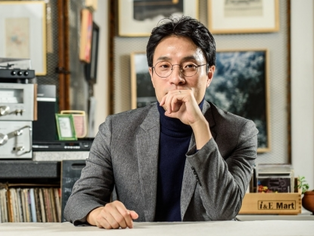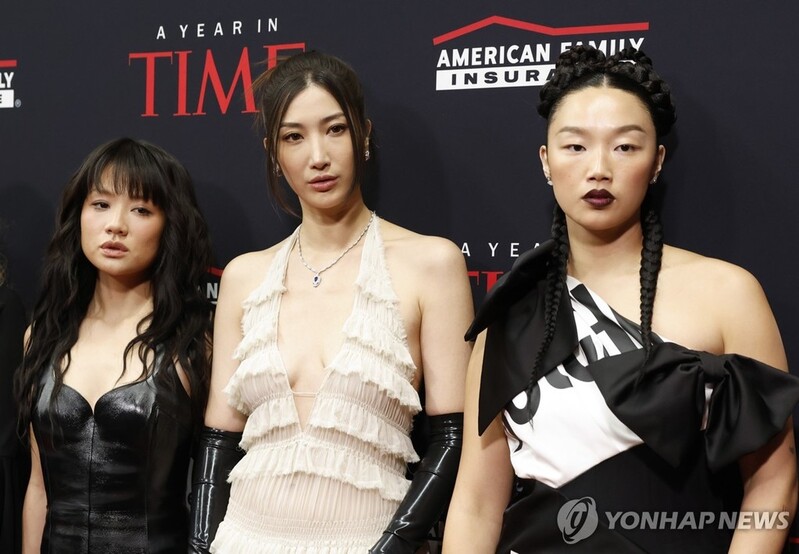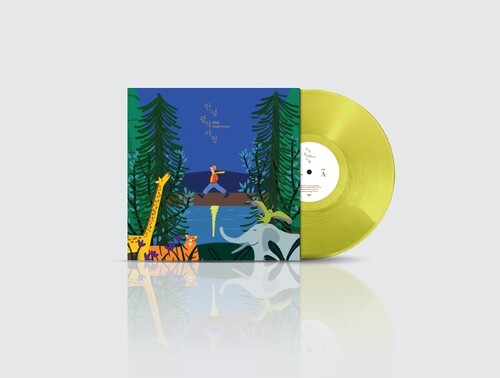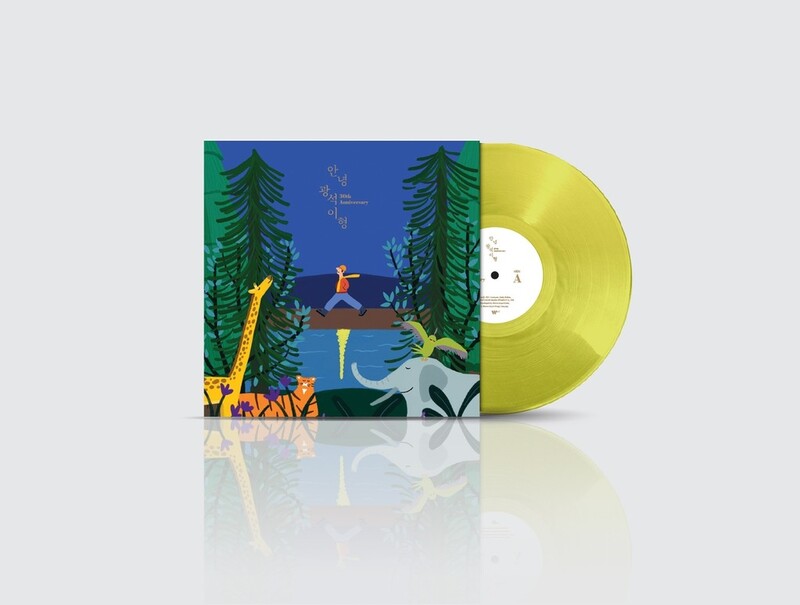 |
| ▲ This poster of the special exhibition "Shaping a Blue World: Goryeo Celadon Figurines," which opens May 3 at the Gyeongju National Museum, is provided by the National Museum of Korea. (PHOTO NOT FOR SALE) (Yonhap) |
SEOUL, May 7 -- A mystical creature, its head slightly raised and tail curled, perches atop a lotus blossom. It is a "fish-dragon," a hybrid of a dragon and a fish, with eyes dotted in iron pigment and every scale meticulously rendered. This exquisite object, crafted in Goryeo’s signature bluish-green hue, is in fact a celadon ewer. Liquid is poured in through the lid at the tail and flows out from the creature’s mouth.
Nearby sits a celadon incense burner lid, only 12 centimeters tall. A male mandarin duck spreads its wings, its form brought vividly to life in brilliant celadon glaze. In the Goryeo Dynasty, waterfowl such as ducks and mandarin ducks were often used as decorative motifs on incense burner lids.
These artifacts — among the finest examples of Goryeo celadon in animal and plant forms — are being showcased in Gyeongju for the first time. The special exhibition "Shaping a Blue World: Goryeo Celadon Figurines" opens May 3 at the Gyeongju National Museum.
“It’s rare to see such a collection of ceramics in Gyeongju,” said Yoon Sang-deok, director of the Gyeongju National Museum. “Visitors can experience the beauty of Goryeo celadon’s colors and forms in the ancient capital of Silla.”
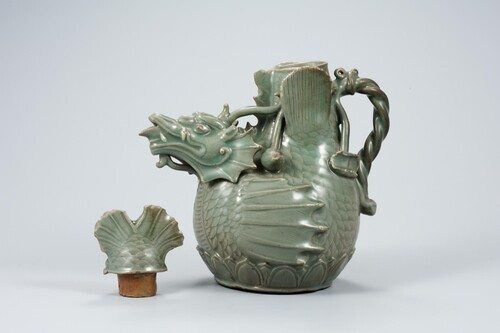 |
| ▲ The celadon ewer of Goryeo period, in the shape of an "eoryong (fish-dragon)," a hybrid of a dragon and a fish, with eyes dotted in iron pigment and every scale meticulously rendered. Photo courtesy of the National Museum of Korea. (PHOTO NOT FOR SALE) (Yonhap) |
Goryeo celadon figurines are celebrated for their harmonious combination of color and form. Artisans shaped the celadon into imaginative creatures like dragons and qilin, as well as everyday symbols such as peaches, pomegranates, and lotus flowers — all rendered in a soft yet vibrant jade-green glaze.
“The celadon figurines of Goryeo represent the height of Korean craftsmanship,” the museum noted, “showcasing the technical prowess and distinctive aesthetic of Goryeo artisans through the brilliant glaze and exquisite sculptural detail.”
The exhibition features 97 celadon pieces from the 12th century — considered the golden age of Goryeo celadon — including a National Treasure fish-dragon ewer. The highlight is Part III, "Lifelike Forms," which gathers masterpieces designated as National Treasures and Treasures. This section presents a wide array of figurative celadon, from real-life flora and fauna to mythical beasts such as dragons, fish-dragons, and qilin.
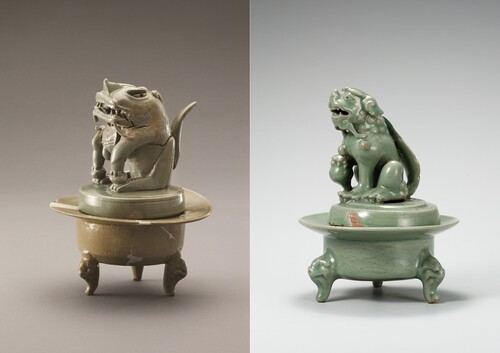 |
| ▲ Treasure Celadon incense burner with lion-shaped lid found near Daeseom Island, Taean (L); and the National Treasure Celadon incense burner with lion-shaped lid housed at the National Museum of Korea (R). Photo courtesy of the National Museum of Korea. (PHOTO NOT FOR SALE) (Yonhap) |
Two incense burners shaped like lions are among the most noteworthy. Goryeo lion incense burners were highly praised even by Song Dynasty connoisseurs in China. Though both pieces on display were made in the 12th century, they show stylistic differences. One, a National Treasure from the National Museum of Korea, features a lion with an open mouth and bent knee. The other, discovered by the National Research Institute of Maritime Cultural Heritage in Taean, South Chungcheong Province, is more rugged, with a flattened face and cracks throughout.
As the exhibition is held in Gyeongju, there are also regional connections. Visitors can explore the legacy of figurative celadon in the city through artifacts such as a duck-shaped cup from the Guhwang-dong garden site east of Bunhwangsa Temple, and a lion-shaped incense burner lid found at Wolji Pond.
The exhibition runs through August 24.
(C) Yonhap News Agency. All Rights Reserved







